Last updated on
Looking to upgrade your kitchen with a new refrigerator? Learn the difference between built-in and freestanding options in this informative article.
As a home decorator, I’ve seen my fair share of kitchen remodels. From the classic farmhouse style to modern minimalist designs, there’s always one appliance that stands out – the refrigerator.
It’s not just a place to store your groceries but also an essential part of your kitchen design. Over the years, I’ve noticed that homeowners often face a dilemma when choosing between built-in and freestanding refrigerators.
Both have their advantages and disadvantages, but which one is right for you? In this blog post, we’ll explore the differences between built-in and freestanding refrigerators so you can make an informed decision for your next kitchen renovation project.
Key takeaways:
- Built-in refrigerators offer a seamless and integrated look.
- Built-ins often come with more features and better insulation.
- Built-ins can be more expensive and may not fit all kitchen layouts.
- Freestanding refrigerators are flexible and cost-effective.
- Freestanding units offer more storage space and easy installation.
What's Inside
Built-In Refrigerator Pros
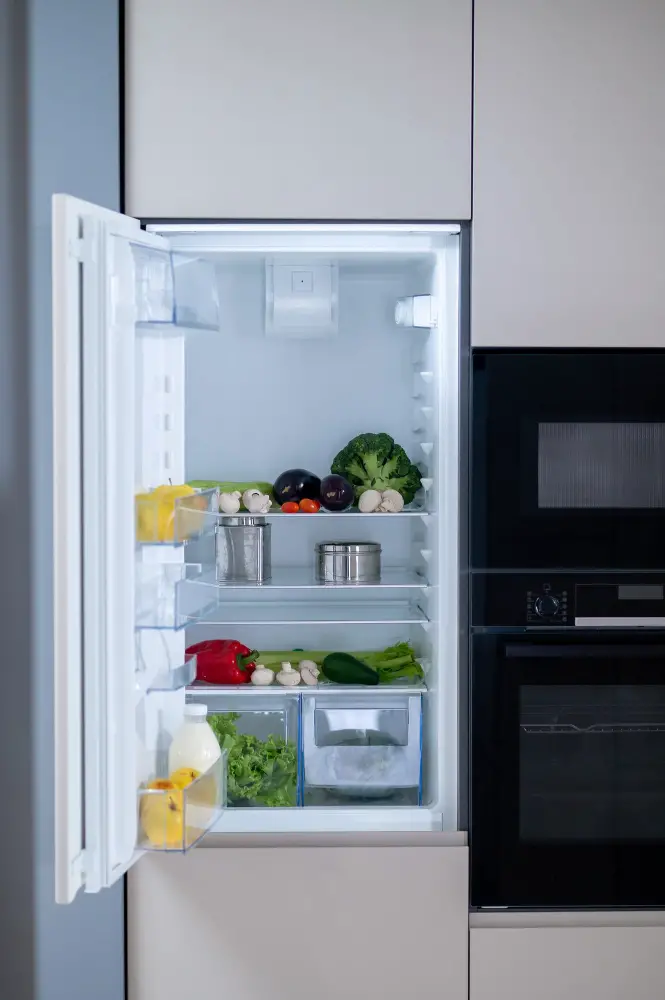
Built-in refrigerators are a popular choice for homeowners who want to achieve a seamless and integrated look in their kitchen. One of the biggest advantages of built-in refrigerators is that they can be customized to fit perfectly into your cabinetry, creating a sleek and cohesive appearance.
Unlike freestanding models, built-ins don’t protrude from the cabinets or stick out like sore thumbs.
Another advantage of built-in refrigerators is that they often come with more features than freestanding models. For example, many high-end brands offer custom panels that match your cabinetry so you can create an almost invisible refrigerator door.
Built-ins also tend to have more advanced temperature control systems and better insulation which helps keep food fresher for longer periods.
If you’re looking for energy efficiency in your home appliances then it’s worth noting that most built-in fridges are designed with this feature in mind as well as being quieter than their counterparts due to superior insulation technology used during manufacturing processes – making them ideal choices when designing eco-friendly kitchens!
Built-In Refrigerator Cons
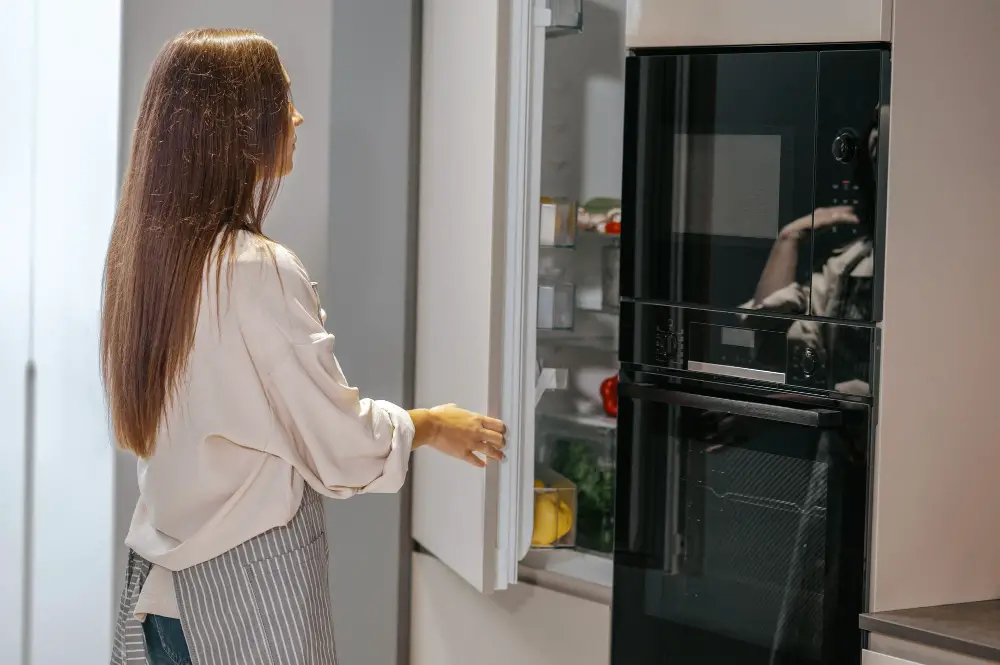
While built-in refrigerators are a popular choice for homeowners, they do come with some drawbacks. One of the biggest cons is their price tag.
Built-in refrigerators can be significantly more expensive than freestanding models due to their custom design and installation requirements.
Another disadvantage of built-in refrigerators is that they may not fit in all kitchen layouts. These units require precise measurements and often need to be installed by professionals, which can limit your options if you have an irregularly shaped or small kitchen space.
Maintenance and repairs on built-in refrigerators can also be more complicated compared to freestanding models since these units are integrated into your cabinetry. Any issues with the refrigerator will likely require a professional technician who specializes in repairing this type of appliance.
While there are many benefits to choosing a built-in refrigerator for your home renovation project, it’s important to consider these potential downsides before deciding which type of fridge is right for you.
Freestanding Refrigerator Advantages
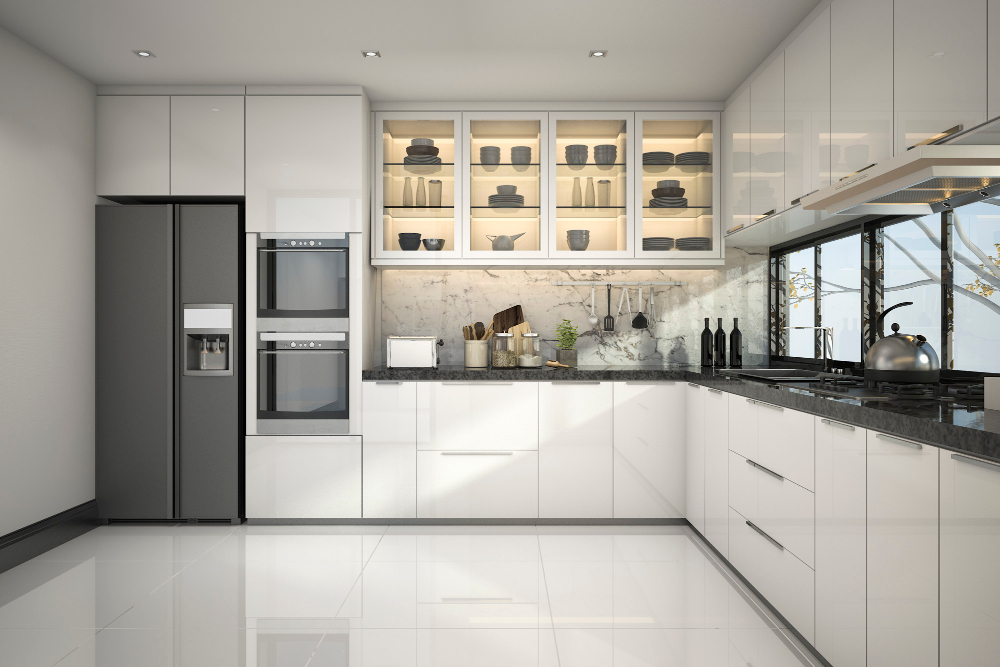
Freestanding refrigerators are the most common type of refrigerator found in homes. They come in a variety of sizes, styles, and colors to fit any kitchen design.
One advantage of freestanding refrigerators is their flexibility when it comes to installation. Unlike built-in models that require custom cabinetry and professional installation, freestanding units can be easily moved or replaced without major renovations.
Another advantage is the cost-effectiveness compared to built-in models. Freestanding refrigerators are generally less expensive than their built-in counterparts because they don’t require additional construction costs for custom cabinetry or professional installation fees.
Many homeowners prefer freestanding units because they offer more storage space than some built-ins due to their larger size options and flexible shelving configurations.
If you’re looking for a budget-friendly option with easy installation and ample storage space options then a freestanding refrigerator may be the right choice for your kitchen renovation project.
Freestanding Refrigerator Disadvantages
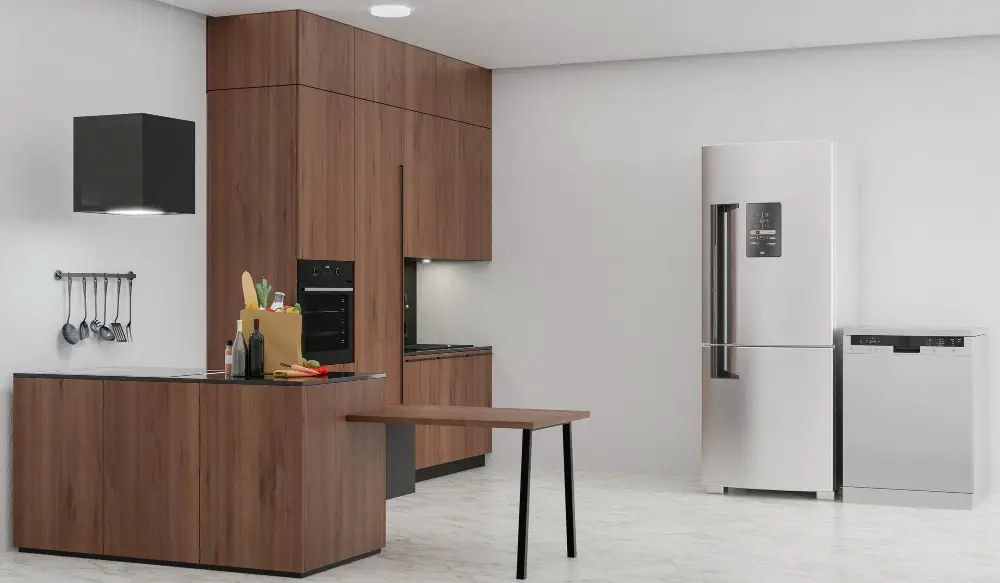
While freestanding refrigerators are a popular choice for many homeowners, they do come with some disadvantages. One of the main drawbacks is their size and design limitations.
Freestanding refrigerators typically have a standard width of 30 inches, which may not fit in smaller kitchens or those with unique layouts. They often protrude from the cabinets and can disrupt the flow of your kitchen’s design.
Another disadvantage is that freestanding refrigerators require more space around them for proper ventilation to prevent overheating and ensure optimal performance. This means you’ll need to factor in additional clearance when planning your kitchen layout.
Lastly, if you’re looking for a seamless look in your kitchen design, freestanding refrigerators may not be ideal as they don’t blend into cabinetry like built-in models do.
While there are certainly advantages to choosing a freestanding refrigerator over its built-in counterpart such as affordability and flexibility when it comes to placement options; it’s important to consider these potential downsides before making your final decision on which type of refrigerator will work best for you and your home renovation project needs.
Installation Differences

When it comes to installation, built-in refrigerators require more planning and preparation than freestanding models. Built-ins are designed to fit seamlessly into your kitchen cabinetry, which means they need a dedicated space that’s the right size and shape.
This requires careful measurements and precise cuts in your cabinets or walls.
On the other hand, freestanding refrigerators can be placed anywhere with an electrical outlet nearby. They don’t require any special modifications or customizations to fit into your kitchen design.
If you’re considering a built-in refrigerator for your home renovation project, make sure you consult with a professional installer who has experience working with these types of appliances. A poorly installed built-in fridge can cause serious damage to both the appliance itself as well as surrounding cabinetry.
While installation differences may seem like minor details when choosing between built-in vs freestanding refrigerators – they play an important role in determining which option is best suited for your needs and budget constraints.
Space and Design Considerations
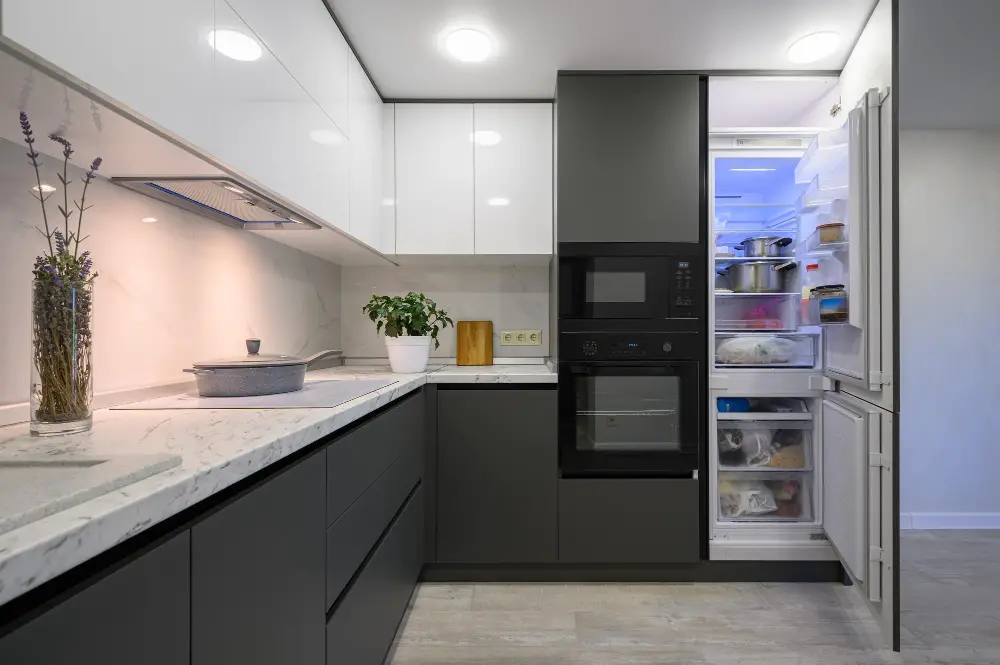
When it comes to choosing between a built-in and freestanding refrigerator, space and design considerations are crucial factors. A built-in refrigerator is designed to fit seamlessly into your kitchen cabinetry, giving your kitchen a sleek and modern look.
However, this type of fridge requires precise measurements during installation as it needs to be flush with the surrounding cabinets.
On the other hand, freestanding refrigerators come in various sizes that can fit any kitchen layout. They offer more flexibility when it comes to placement since they don’t require custom cabinetry or specific dimensions for installation.
When considering space and design options for your new fridge, think about how you want your kitchen’s overall aesthetic to look like.
If you’re going for a seamless appearance with minimal clutter on display in the room’s interior design scheme, go ahead with installing a built-in model that will blend right into its surroundings without drawing attention away from other elements such as countertops or backsplashes.
However, if you prefer an eclectic style where appliances stand out against their surroundings, opt for something more eye-catching like one of many colorful retro-style models available today!
Price Comparison

When it comes to choosing between a built-in and freestanding refrigerator, price is often a significant factor. Due to the installation process and custom design options, built-in refrigerators tend to be more expensive than their freestanding counterparts.
The cost of installing a built-in refrigerator can vary depending on the complexity of your kitchen layout, but you should expect to pay anywhere from $1,000-$10,000 for installation alone.
On the other hand, freestanding refrigerators are generally less expensive because they don’t require any special installation or customization. You can find high-quality models for as little as $500-$1,500.
It’s important to keep in mind that while upfront costs may differ significantly between these two types of refrigerators; there are also long-term costs associated with energy efficiency that could impact your overall budget over time.
When making your decision based on price alone consider all factors involved before making an informed choice about which type will work best for you and your family’s needs in terms of both functionality and affordability.
Energy Efficiency Comparison
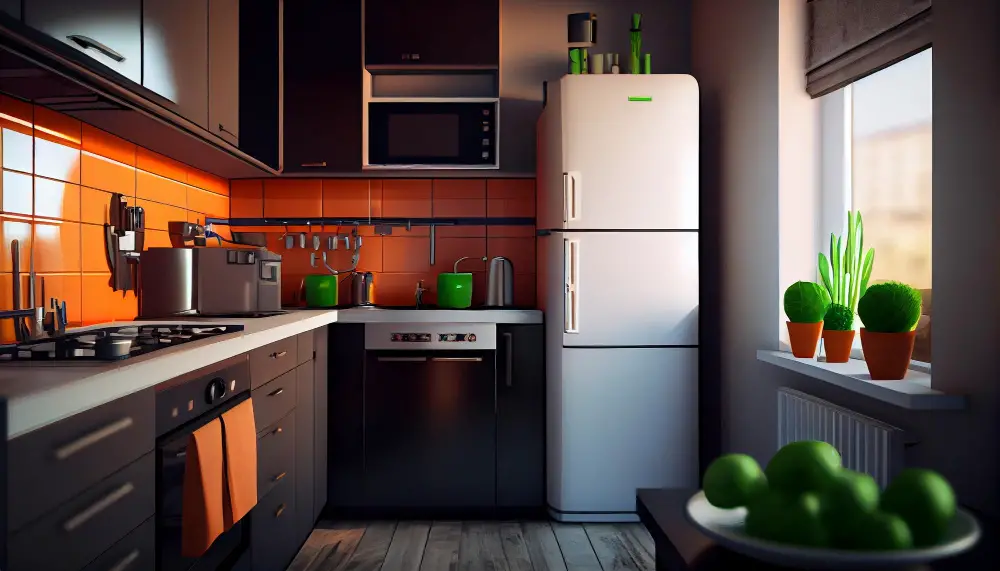
Built-in refrigerators are known for their high-end features and sleek design, but they can also be more expensive and less energy-efficient than freestanding models.
On the other hand, freestanding refrigerators come in a wide range of sizes and styles at varying price points with many being Energy Star certified.
Energy Star certification means that the appliance meets strict guidelines set by the U.S Environmental Protection Agency (EPA) for energy efficiency. This translates into lower electricity bills over time as well as reducing your carbon footprint.
When comparing built-in vs. Freestanding refrigerators’ energy consumption levels, you’ll find that most modern models have similar ratings regardless of type or brand name; however, some built-ins may use more power due to their larger size or additional features like ice makers or water dispensers.





